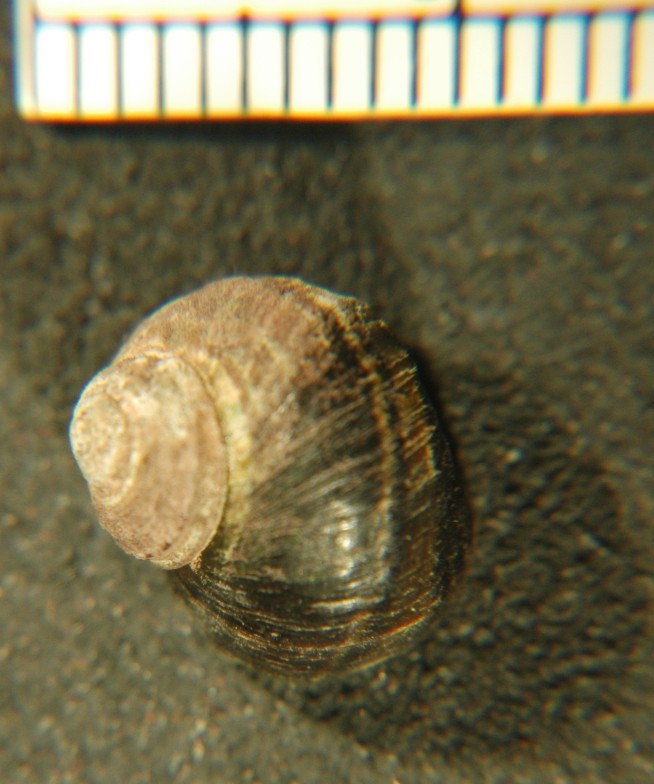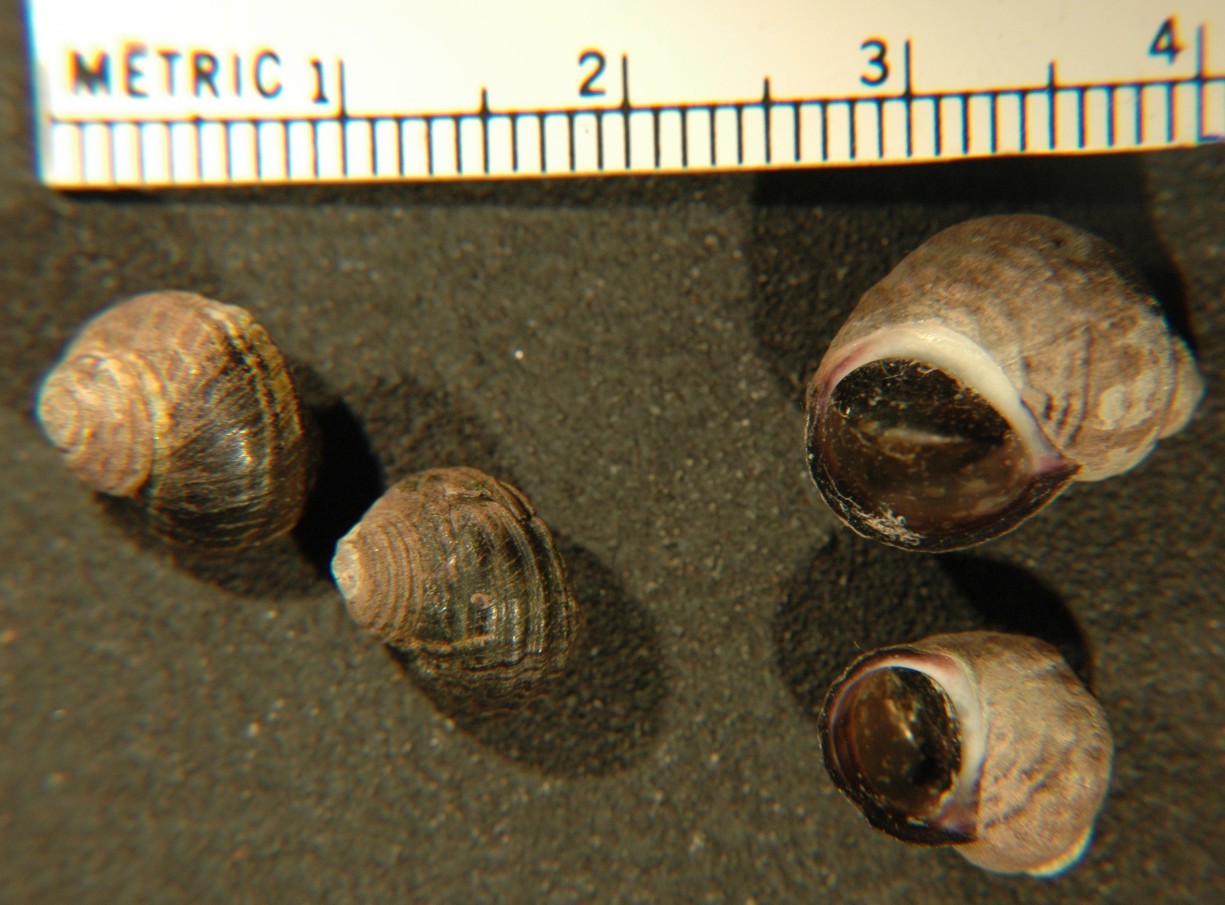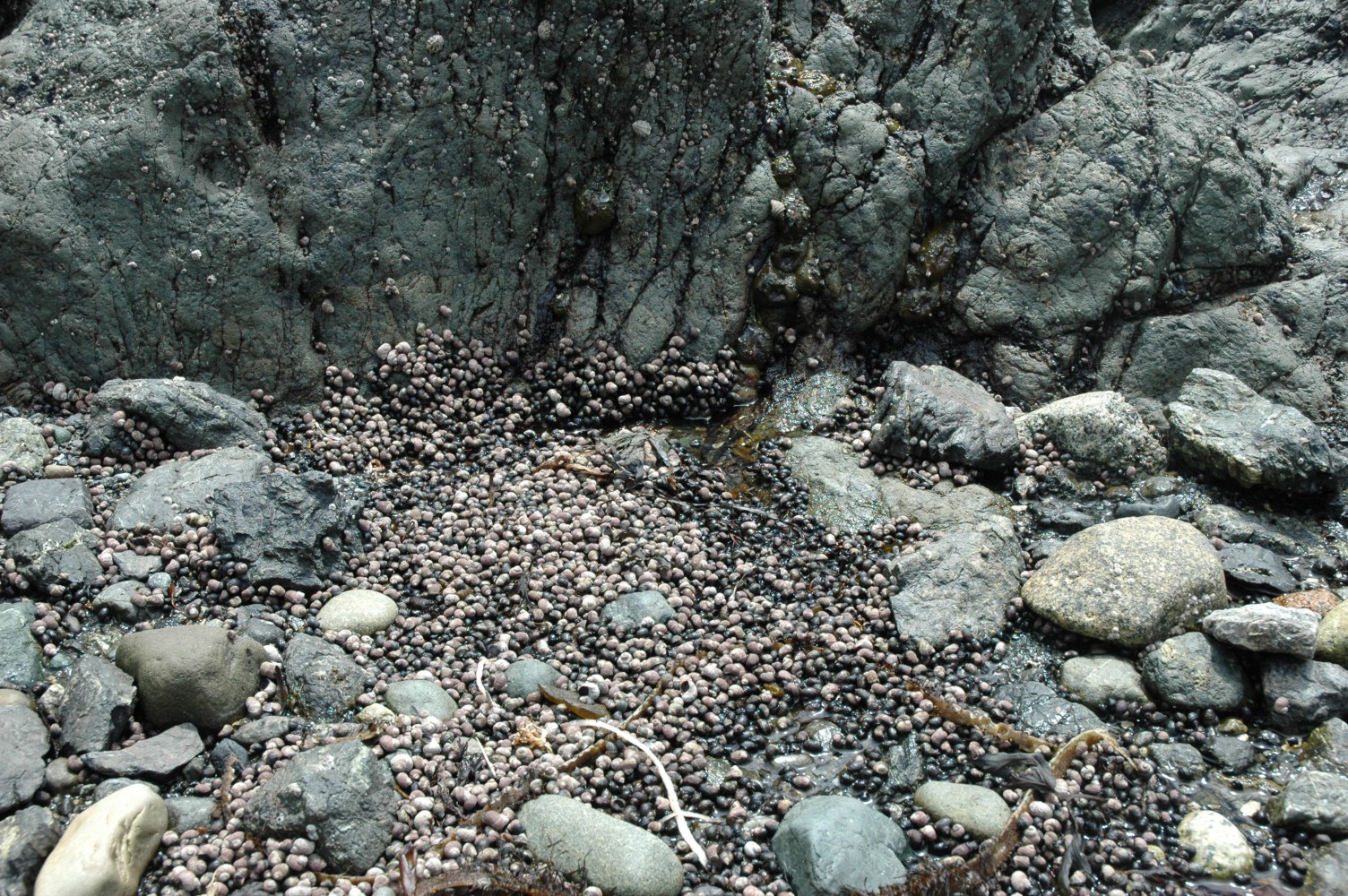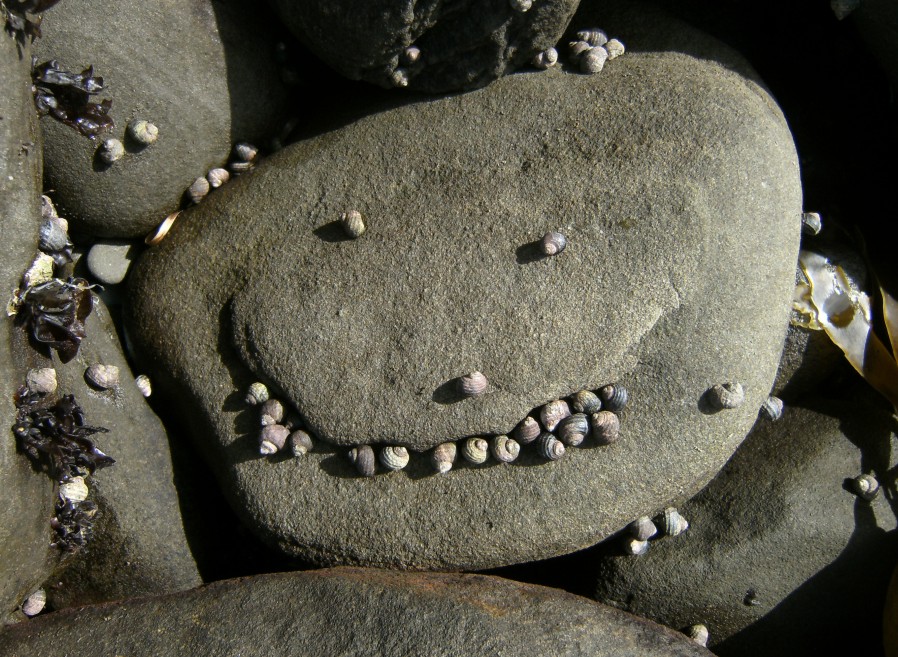Littorina sitkana Philippi, 1845Common name(s): Sitka periwinkle, Sitka littorine |
|
| Synonyms: Littorina sitchana |  |
| Phylum Mollusca
Class Gastropoda Subclass Prosobranchia Order Mesogastropoda Suborder Taenioglossa Family Littorinidae |
|
| Littorina sitkana, from western San Juan Island. Scale is millimeters. | |
| (Photo by: Dave Cowles, July 2006) | |
How to Distinguish from Similar Species: This is the most globose local littorina. Others do not have pronounced spiral ridges.
Geographical Range: Alaska to Puget Sound, Sea of Okhotsk, Japan
Depth Range: Very high to low intertidal
Habitat: Mostly in sheltered areas, on rocks or among algae such as rockweed. Also on pilings and eelgrass. Areas protected from direct sun may have greater concentrations (photo). Often found in and around crevices.
Biology/Natural History: This species can survive long periods out of the water and will eventually suffocate of forced to remain under water. It ranges very high in the intertidal. It feeds on diatoms and fine algae, which it rasps off rockweed and off the rocks themselves. It also eats the black lichen which is found in the high intertidal. During grazing it also eats tiny settled barnacles. Predators include snails such as Nucella lamellosa, seastars such as Evasterias troschelii and Leptasterias hexactis, red rock crabs Cancer productus, nemertean worms such as Amphiporus formidabilis, fish such cockscomb pricklebacks (Anoplarchus purpurescens), pile perch (Rhacochilus vacca), clingfish (Gobiesox meandricus), and a variety of ducks, surfbirds, and turnstones. The empty shells are used by small hairy hermit crabs Pagurus hirsutiusculus. This species lays its eggs in gelatinous masses on rocks and algae. The capsules look like tiny reddish flattened lemons. Eggs are laid in the spring or fall on Vancouver Island, and in summer in Oregon. One egg mass may contain the eggs of several females, which may help deter dessication. Unlike L. scutulata, the larvae hatch as juveniles and do not have a pelagic stage. Adults also do not range far, usually moving less than 1 meter per month. They are much more active on foggy days. the foot is divided by a median line and the animal crawls by lifting one half of the foot at a time. Individuals on more exposed coasts are smaller with thinner shells and a larger foot, but still did not survive winter storms well. The constant scraping of littorinid (periwinkle) radulas has been estimated to scrape as much as 1 cm off of intertidal rocks per 16 years.
| Return to: | |||
| Main Page | Alphabetic Index | Systematic Index | Glossary |
References:
Dichotomous Keys:Flora and Fairbanks, 1966
Griffith, 1967
Kozloff 1987, 1996
General References:
Carefoot,
1977
Harbo,
1997
Harbo,
1999
Johnson
and Snook, 1955
Kozloff,
1993
McConnaughey
and McConnaughey, 1985
Morris,
1966
Niesen,
1997
O'Clair
and O'Clair, 1998
Sept,
1999
Scientific Articles:
Behrens, S., 1971. The distribution and abundance of the
intertidal
prosobranchs Littorina
scutulata
(Gould 1849) and Littorina sitkana (Philippi
1845). M.S. thesis,
University of British Columbia, Vancouver, Canada.
Web sites:
General Notes and Observations: Locations, abundances, unusual behaviors:

In this group the spiral ridges can be seen on those on the left and the horny operculum can be seen on those to the right

This dense aggregation of L. sitkana is in the
upper intertidal
of San Juan Island. This aggregation is in a steep-sided cove
partly
protected from the sun.
Sometimes the aggregations spontaneously form into pleasing shapes, such as this smile at Slip Point, WA. Photo by Dave Cowles, July 2012
Authors and Editors of Page:
Dave Cowles (2006): Created original page
